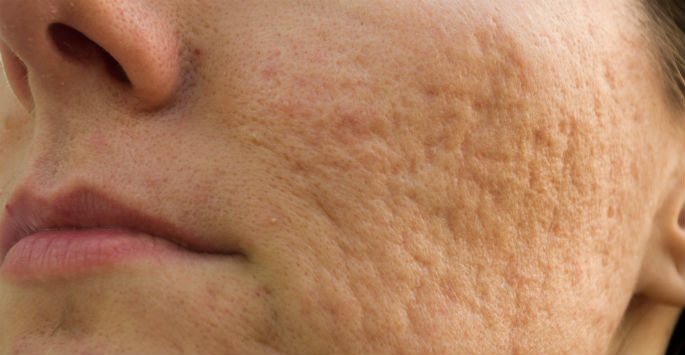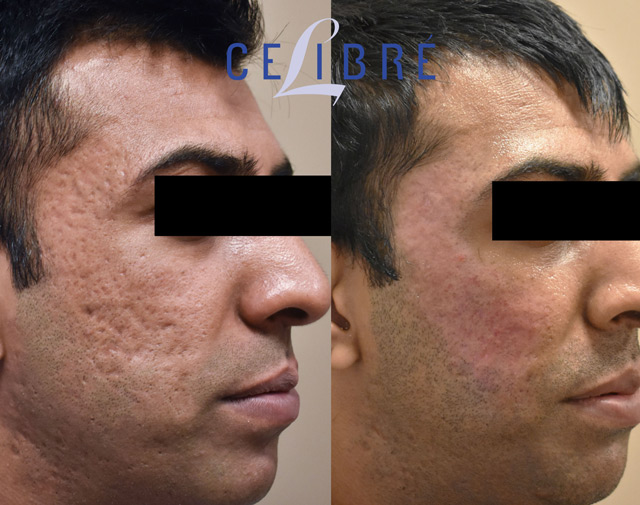Innovative Acne and Acne Scars Treatment: Solutions for Every Skin Type
Innovative Acne and Acne Scars Treatment: Solutions for Every Skin Type
Blog Article
Understanding the Various Skin Problem and Efficient Therapy Options for Acne Scars
Acne scars represent a complex interplay of skin disease that significantly influence people' self-confidence and general skin health and wellness. Recognizing the distinct sorts of acne marks-- atrophic and hypertrophic-- along with their underlying reasons, is critical for establishing effective therapy techniques. Different restorative options exist, varying from innovative skin-related treatments to natural solutions. Nonetheless, the efficacy of these treatments commonly hinges on personalized analyses by certified experts. As we discover the landscape of acne mark management, it comes to be obvious that the journey towards clearer skin may entail even more than simply topical remedies.
Kinds of Acne Scars
Acne marks can manifest in different kinds, each requiring particular treatment strategies. Both primary classifications of acne marks are atrophic and hypertrophic scars. Atrophic scars are characterized by a loss of tissue, causing depressed locations on the skin. These marks are further categorized right into three subtypes: ice pick marks, which are slim and deep; boxcar scars, which are larger and have well-defined edges; and rolling marks, which create a wave-like look due to unequal skin appearance.
In contrast, hypertrophic scars result from an overflow of collagen throughout the recovery procedure, causing increased locations on the skin. These marks are often solid and can vary in color, often showing up red or darker than the bordering skin.

Root Causes Of Acne Scarring
Scarring occurs as an outcome of the body's all-natural healing feedback to swelling and injury brought on by acne sores. When acne types, it sets off an inflammatory feedback, leading to the release of different cytokines and development factors that advertise recovery. Nonetheless, this process can sometimes bring about extreme tissue development or inadequate fixing, leading to scars.
The primary reasons of acne scarring include the extent of the acne itself, duration of the sores, and individual skin kinds. Serious inflammatory acne, such as cysts and nodules, is most likely to cause scarring due to much deeper tissue damage. In addition, improper handling of acne lesions, such as picking or squeezing, can exacerbate cells injury and swelling, increasing the probability of scarring.
Hereditary tendency also plays a substantial role; individuals with a family members history of scarring go to a greater risk. Skin type and color can influence mark development, as darker skin tones might experience post-inflammatory hyperpigmentation, while lighter skin might develop atrophic scars.

Therapy Choices for Scarring
Efficient treatment options for acne scarring vary depending on the type and severity of the marks. Usually classified right into atrophic, hypertrophic, and keloid marks, these conditions require tailored approaches for optimal outcomes.
For atrophic marks, which are defined by a loss of tissue, treatments such as chemical peels, microdermabrasion, and laser treatment are generally used. These techniques promote skin revival and boost collagen production, thus improving skin appearance. Subcision, a minimally intrusive procedure, can also work by damaging up fibrous bands below the skin.
Hypertrophic and keloid marks can be extra testing to treat. Options consist of corticosteroid injections to reduce swelling and flatten the marks. skin rejuvenation treatments. In many cases, cryotherapy or laser treatment may be suggested to lessen their appearance
Surgical alternatives are offered for severe scarring, where excision or skin grafting might be required. It's important for people to speak with a dermatologist to examine their specific mark type and discuss one of the most suitable therapy plan. Integrating multiple treatments frequently generates the most effective end results, guaranteeing that each person's distinct skin problem is addressed effectively.
Home Treatments and All-natural Solutions
Natural remedies and natural home remedy can supply an available strategy for individuals seeking to boost the look of acne marks. Various components located in the home kitchen have actually shown potential benefits in improving skin appearance and promoting healing.
Applying fresh aloe vera gel directly onto the scars can help improve skin hydration and decrease inflammation. Honey possesses natural antibacterial and moisturizing high qualities that can help in scar healing.
One more efficient choice is lemon juice, which functions as an all-natural exfoliant and can lighten hyperpigmentation. It ought to be used cautiously, as it may create photosensitivity. Oat meal masks are likewise helpful; their mild exfoliation can help get rid of dead skin cells while comforting irritability.
Necessary oils, such as tea tree oil and lavender oil, can additionally support scar recovery because of their antimicrobial residential properties. It is crucial to perform a patch test before using any remedy to ensure there are no unfavorable responses. These all-natural services can be a complementary strategy in the trip to diminish acne marks.
Preventing Future Scarring
Adopting a proactive approach to skin care can considerably click for more info reduce the threat of establishing future acne scars. Among the essential approaches is to handle acne efficiently as it emerges (skin rejuvenation treatments). This includes making use of non-comedogenic skincare items and medications suggested by dermatologists that target acne without aggravating the skin. Routine cleaning, exfoliation, and hydration can aid maintain skin wellness and prevent stopped up pores.
Additionally, preventing the lure to squeeze or choose acne sores is crucial, as this can result in swelling and succeeding scarring. Rather, individuals ought to concentrate on using topical therapies that promote healing and minimize swelling. Ingredients such as salicylic acid, benzoyl peroxide, and retinoids are known for their effectiveness in handling acne and decreasing marks.

Last but not least, maintaining a healthy diet plan dig this abundant in anti-oxidants and staying hydrated supports skin regeneration. By carrying out these preventative measures, individuals can considerably decrease their risk of future scarring and promote general skin health and wellness.
Verdict
To conclude, a comprehensive understanding of acne scars, encompassing both atrophic and hypertrophic types, is necessary for reliable therapy approaches. Customized treatments, including expert therapies and natural remedy, can substantially boost skin look and structure. Safety nets likewise play a vital duty in lessening future scarring. Appointment with a dermatologist remains vital to develop customized methods official site that consider specific skin kinds and mark seriousness, ultimately boosting the efficiency of scar management techniques.
Acne marks represent an intricate interplay of skin problems that considerably influence individuals' self-worth and general skin wellness. The 2 primary classifications of acne scars are hypertrophic and atrophic marks. These scars are more classified right into three subtypes: ice pick marks, which are slim and deep; boxcar marks, which are larger and have distinct edges; and rolling scars, which produce a wave-like look due to unequal skin texture.
A comprehensive appointment with a dermatologist can aid establish the most suitable treatment, taking into account the person's skin kind, mark seriousness, and total skin health.
Consultation with a skin doctor remains imperative to design tailored strategies that think about individual skin kinds and mark seriousness, inevitably boosting the efficacy of scar administration strategies.
Report this page